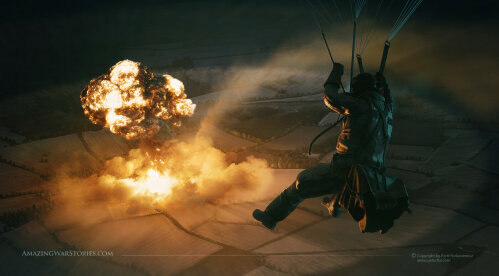Schmeisser MP 38 & 40
When it comes to weapons that have made an impact in history, the Schmeisser MP 38 and MP 40 are no exception. These weapons, which were conceived and developed by Hugo Schmeisser a German weapons designer who worked for the Rheinmetall-Borsig company in the 1930s. The designation MP stands for Machinen Pistole and the two figures are the year of the model.
Like other submachine guns, the MP38 & 40 fired a 9mm pistol round and were intended to be used by the infantry and paratroopers, so it needed to be rugged, lightweight, compact, and easy to use.
The MP 38 was first introduced in 1938, and it was quickly adopted by the German army. However, the weapon proved to be too complex and expensive to manufacture, so a new version was developed: the MP 40.
To streamline its production, the Schmeisser team used stamped steel and electro-spot welding as much as possible and this led to a significant increase in production, as well as a reduction in costs. As a result, the MP 40 became the standard submachine gun for the German army during World War II. It was this method of production that inspired the British made Sten.
It quickly became a firm favourite with German troops and was used in many campaigns, including the invasion of Poland, the Battle of France, and the invasion of the Soviet Union.
The MP40 was a highly effective weapon, with a high rate of fire and a magazine capacity of 32 rounds. However, they were also notorious for their tendency to jam, especially in the harsh conditions of the Eastern Front.
But the positives greatly outweighed it’s flaws, one innovative feature being its forward-folding metal stock, which was the first of its kind for a submachine gun. This made it much easier for paratroopers to carry and to fire from the hip.
By the end of World War II, an estimated 1.1 million MP 40s had been produced of all variants and many were captured or surrendered to the Allies who then distributed to paramilitary and irregular forces in developing countries. The Norwegian army withdrew the MP 38 from use in 1975 but used the MP 40 for some years more. In particular, the Territorials (Heimevernet) used it until about 1990 when it was replaced by the Heckler & Koch MP5.
In conclusion, the Schmeisser MP 38 & 40 submachine guns have played an essential part in world history. From the machined steel of the MP 38 to the stamped steel of the MP 40, these weapons have seen an evolution in their production and usage. The Schmeisser team and their contributions to the world of firearms will not be soon forgotten.








